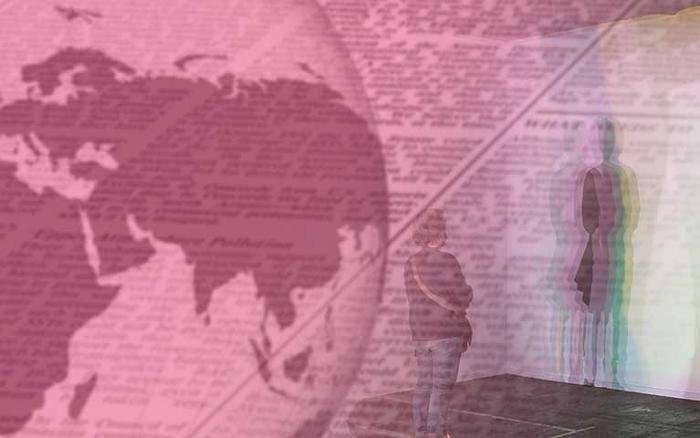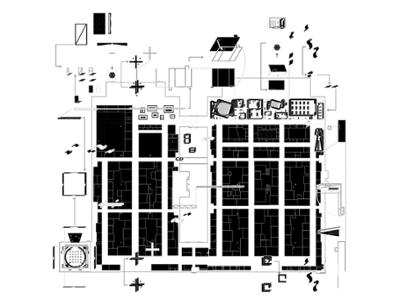

Object-Oriented Urbanism: an artificial ecology of the fair
The spatial design project for the 43rd edition of the ARCOmadrid fair is meant to serve as a major work of Domestic Urbanism, like a true pop-up city, entirely indoors, which takes place over 5 days at Halls 7 and 9 of IFEMA MADRID. On a formal level, the project stands for the emancipation of materials, construction systems and trade fair ecologies to generate a unique Object-Oriented Urbanism. From a conceptual point of view, ARCO43 takes place simultaneously on two scales: one urban and the other architectural.
Domestic urbanism
On an urban scale, town planning proposes a distribution of required uses via specific, compact and pragmatic pieces which contain highly specific or private programmes; between them, these generate public spaces that function as small domestic squares which, halfway between the street and the sitting room, between the city and the gallery, create Domestic Urbanism. These interstitial spaces are equipped with furniture whose design hybridises seemingly domestic forms with entirely urban material finishes, consequently generating a singular superimposition of the two spheres.
This Domestic Urbanism is reinforced by a strategy in the lighting that takes as a reference point the method previously tested at ARCO 42 last year, reducing the general overhead lighting of the pavilions to the minimum possible and operating mainly with lighting suspended from trusses at a height of 4m. This radically changes the user's perception; the ‘ceiling plane’ moves immediately from the 12m height of the roof to the 4m marked by the new plane of light. Floating at a more domestic height, it leaves behind everything above it in an ignored semi-darkness.
Synthetic Ecosystems
On an architectural level, the project uses exclusively trade fair materials, objects and construction systems, offering a twist on these. Even as it reclaims their aesthetics, it also re-invents their more conventional uses.
In the architecture of trade fair events, there is usually a tendency to simulate situations that are alien to the trade fair ecosystem itself. Architectures from other contexts are imported or scenarios are recreated; ‘fake’ architecture is used to simulate situations. Some are more literal, others more conceptual, but all look away from the context in which events such as ARCO take place, attempting to use architecture as a mere disguise.
This project proposes something radically opposite: to work explicitly with the constructive systems, materials, agents, architectures and economies endemic to the trade fair world in order to generate a place that is at once unexpected, but which also contains all the genetics of the trade fair: a trade fair metropolitanism, which generates a singular Artificial Ecology.
Hanging truss systems, MDF boards with a maximum length of 3.66m, linear metres of carpet roll, elastic textiles, stage spotlights, synthetic padding, eco-friendly waterproofing, OSB boards...
These are just a few of the elements that will shape the proposal. But they will not work as material for covering, painting or concealing, but rather as ways to place these constructive systems, processes and technologies front and centre. Yet further, they will claim their emancipation and aim to test out what could be called an Object-Oriented Urbanism.
ARCOmadrid 43 is presented as a synthetic ecosystem in which stage trusses, art collectors, insulation, attachment systems, gallery owners, cultural programmes and works of art simultaneously cohabit the same Domestic Urbanism.




